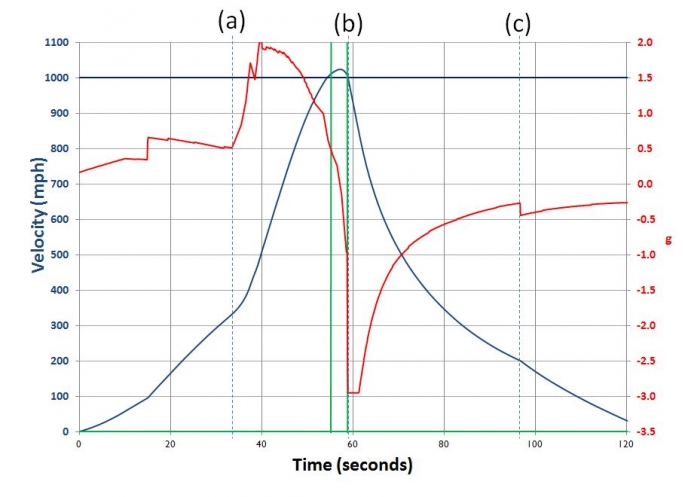The performance curve below illustrates the life-cycle of a run to over 1,000mph. The blue curve, and the left-hand scale, shows the velocity in miles per hour against time from the start of the run. The red curve, with the right-hand scale, indicates the longitudinal acceleration of the Car. Positive acceleration means that the Car is accelerating, and negative acceleration indicates that the Car is decelerating. The green vertical lines show where the Car goes through the measured mile. This is an ideal (and theoretical) run for BLOODHOUND SSC where the parachutes are not required.

BLOODHOUND SSC accelerates from rest using the EJ-200 jet engine, taking it up to just over 300mph.
At that point (a) the rocket will be ignited, so that it and the jet are operating simultaneously, thereby increasing the acceleration to around 2g.
Having reached maximum speed (1,050mph), the rocket thrust will be stopped, the jet engine throttled back and airbrakes begin to deploy (point b). The car will decelerate at nearly 3g.
When the vehicle slows to subsonic speeds the aerodynamic drag will reduce dramatically, slowing the deceleration of the vehicle. An additional deceleration peak is shown on the curves (point c) at 200 mph when the hydraulically operated disc brakes can be used.
The Land Speed record is calculated from the average times of the car over two runs, completed within the space of an hour. The ability to control the car’s stopping, and therefore the turn-round time, is key to the success of the record attempt.

